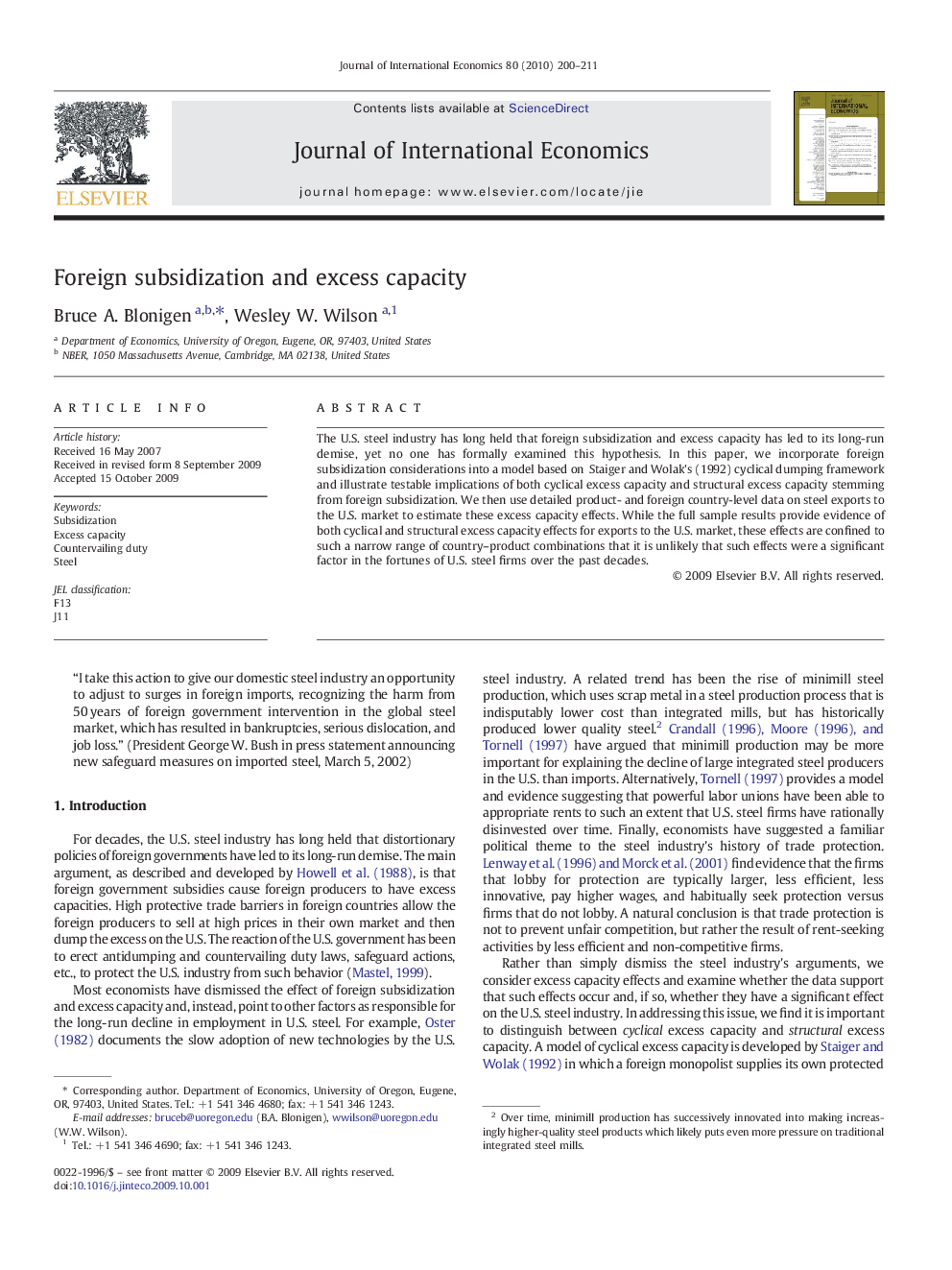| Article ID | Journal | Published Year | Pages | File Type |
|---|---|---|---|---|
| 962763 | Journal of International Economics | 2010 | 12 Pages |
Abstract
The U.S. steel industry has long held that foreign subsidization and excess capacity has led to its long-run demise, yet no one has formally examined this hypothesis. In this paper, we incorporate foreign subsidization considerations into a model based on Staiger and Wolak's (1992) cyclical dumping framework and illustrate testable implications of both cyclical excess capacity and structural excess capacity stemming from foreign subsidization. We then use detailed product- and foreign country-level data on steel exports to the U.S. market to estimate these excess capacity effects. While the full sample results provide evidence of both cyclical and structural excess capacity effects for exports to the U.S. market, these effects are confined to such a narrow range of country-product combinations that it is unlikely that such effects were a significant factor in the fortunes of U.S. steel firms over the past decades.
Related Topics
Social Sciences and Humanities
Economics, Econometrics and Finance
Economics and Econometrics
Authors
Bruce A. Blonigen, Wesley W. Wilson,
